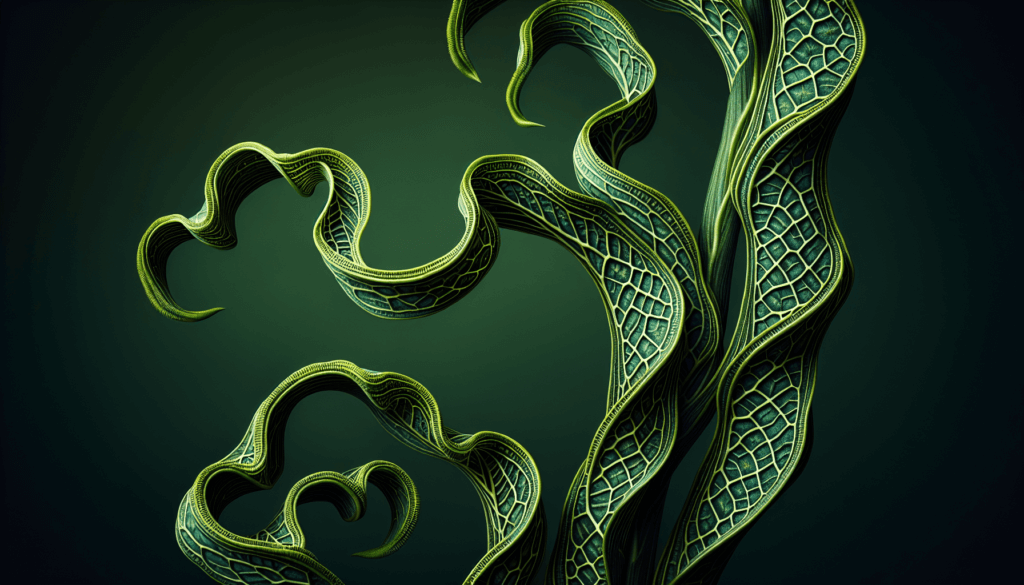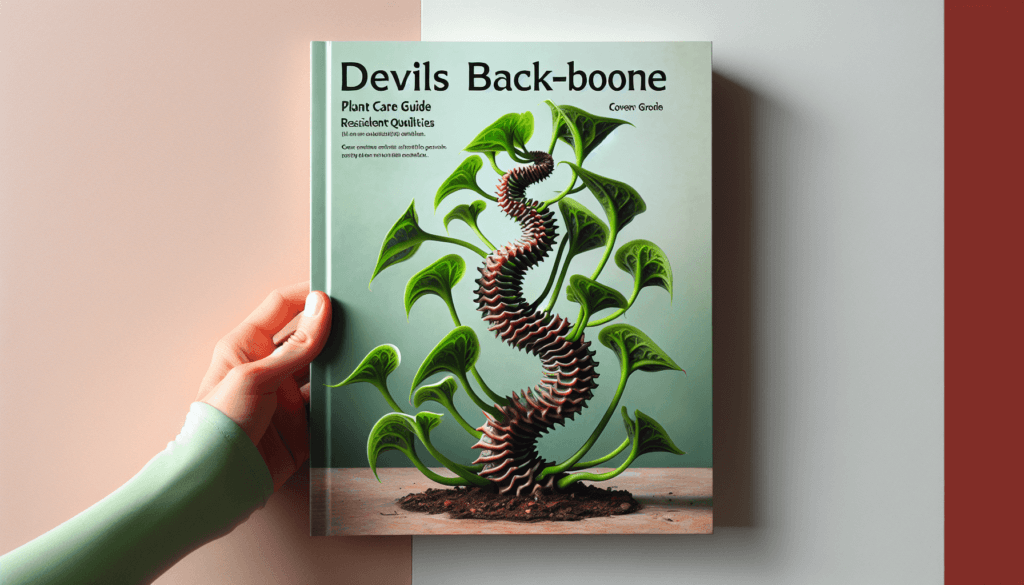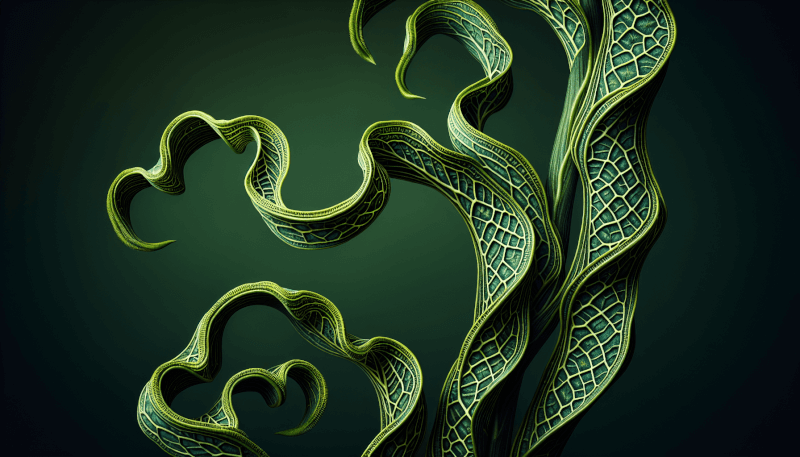Are you a plant enthusiast looking to add a unique and hardy plant to your collection? Well, look no further than the Devils Backbone plant! With its striking and distinct appearance, this plant is sure to catch your eye. In this article, we will guide you through the basics of Devils Backbone plant care, ensuring that you have all the information you need to keep this stunning plant thriving in your home or garden. Let’s dive into the world of Devils Backbone plant care and discover the secrets to cultivating this beautiful and resilient plant.

Light Requirements
Indoor Placement
When it comes to indoor placement, the Devil’s Backbone plant prefers a bright location with indirect sunlight. Place your plant near a window where it can receive bright, filtered light for a few hours a day. Avoid placing it in direct sunlight as the intense rays can scorch the leaves and cause damage. If you don’t have a bright spot, you can also use artificial grow lights to provide the necessary light for your Devil’s Backbone plant to thrive.
Outdoor Placement
If you have decided to grow your Devil’s Backbone plant outdoors, it is important to consider the amount of light it will receive. This plant does well in partial shade, making it a great choice for those areas in your garden that do not receive direct sunlight throughout the day. Choose a spot that receives bright, indirect sunlight for a few hours a day, and ensure that it is sheltered from strong winds and extreme temperatures.
Watering
Watering Frequency
Proper watering is essential for the health of your Devil’s Backbone plant. Allow the top inch or two of the soil to dry out before watering it again. Stick your finger into the soil and check for moisture levels. If it feels dry, it is time to water your plant. Be careful not to overwater as this can lead to root rot and other issues. The frequency of watering will depend on various factors including the temperature, humidity, and the size of your pot.
Proper Drainage
To prevent water from accumulating and causing root rot, ensure that your Devil’s Backbone plant is potted in a container with drainage holes. This allows excess water to escape and prevents the roots from sitting in waterlogged soil. Additionally, using a well-draining potting mix will help facilitate proper drainage and prevent water-related issues.
Temperature and Humidity
Ideal Temperature Range
The Devil’s Backbone plant thrives in temperatures between 65°F and 75°F (18°C to 24°C). It can tolerate slightly higher or lower temperatures, but extremes should be avoided. Keep in mind that sudden temperature fluctuations can cause stress to the plant, so try to provide a stable and comfortable environment.
Humidity Levels
While the Devil’s Backbone plant can adapt to average household humidity levels, it appreciates slightly higher humidity. If your indoor air is dry, consider using a humidifier or placing a tray of water near the plant to elevate humidity levels. Misting the foliage occasionally can also be beneficial for the plant, but be cautious not to overdo it, as excess moisture can lead to fungal diseases.
Soil
Well-draining Soil
The Devil’s Backbone plant prefers soil that is well-draining to prevent excess moisture. A mix of peat moss, perlite, and coarse sand is ideal for ensuring proper drainage. Avoid using heavy clayey or compacted soils, as they may retain too much water and lead to root rot.
Potting Mixes
When choosing a potting mix for your Devil’s Backbone plant, opt for a balanced, well-draining mix specifically formulated for tropical plants. These mixes usually contain a blend of peat moss, perlite, and other organic materials that provide adequate aeration and moisture retention. Avoid using soil straight from your garden, as it may not offer the proper drainage and nutrient balance required.

Fertilization
Frequency and Timing
To promote healthy growth and vitality, it is recommended to fertilize your Devil’s Backbone plant every two to four weeks during the growing season, which typically runs from spring to early autumn. Avoid fertilizing during the winter months when the plant goes into a period of dormancy.
Appropriate Fertilizer
When selecting a fertilizer for your Devil’s Backbone plant, choose a well-balanced, water-soluble fertilizer designed for houseplants or tropical plants. Look for a formulation with equal or near-equal amounts of nitrogen, phosphorus, and potassium (N-P-K). Follow the instructions on the fertilizer package for the correct dilution ratio and application method. Over-fertilization can result in leaf burn, so it is crucial to avoid using excessive amounts of fertilizer.
Pruning
Removing Dead or Damaged Foliage
Regular pruning is essential for maintaining the appearance and health of your Devil’s Backbone plant. Remove any yellowed, wilted, or dead leaves by gently pulling them off to encourage new growth. If you notice any stems or branches that are damaged or diseased, prune them back to healthy tissue using clean pruning shears.
Shaping and Controlling Size
If your Devil’s Backbone plant becomes leggy or unruly, you can prune it back to maintain a more compact shape. Utilize clean pruning shears to trim longer stems, remembering to cut just above a leaf node. This will encourage branching and help the plant to grow bushier. Regular trimming and shaping will also help control the overall size of the plant, making it suitable for your available space.
Propagation
Stem Cuttings
Propagating the Devil’s Backbone plant through stem cuttings is a great way to multiply your plant collection. Take 4-6 inches (10-15 cm) long stem cuttings from the plant, ensuring they have at least one or two sets of leaves. Remove the lower leaves and dip the cut end of the stem in a rooting hormone to encourage root development. Plant the cutting in a well-draining potting mix and keep it in a warm, humid environment until roots develop.
Leaf Cuttings
Leaf cuttings can also be used to propagate the Devil’s Backbone plant. Select healthy leaves and cut them into sections, making sure each section contains a portion of the leaf stem (petiole). Place the leaf cuttings in a tray or pot with a mix of peat moss and perlite, ensuring that the cut ends are inserted into the soil. Mist the cuttings regularly to maintain humidity and provide indirect light. New plants will eventually develop from the leaf sections.
Pests and Diseases
Common Pests
The Devil’s Backbone plant is generally resistant to many common pests. However, it may occasionally encounter issues with aphids, mealybugs, and spider mites. Regularly inspect your plant for any signs of infestation, such as sticky residue, white webs, or distorted foliage. If you notice pests, treat them promptly with an appropriate insecticidal soap or neem oil spray, following the instructions on the product label.
Preventing and Treating Diseases
The Devil’s Backbone plant is relatively disease-resistant, but improper care can lead to some issues. Overwatering can cause root rot, while underwatering can result in leaf curling and wilting. To prevent these problems, ensure proper watering practices and provide good drainage. If your plant does suffer from disease, such as fungal leaf spots or powdery mildew, treat it with a suitable fungicide following the instructions on the product label.
Repotting
Signs It’s Time to Repot
As the Devil’s Backbone plant grows, it may outgrow its current pot and require repotting. Look for signs such as roots growing out of drainage holes, visible roots on the soil surface, or slow growth despite regular care. Additionally, if the plant becomes top-heavy and unstable, it may be time to repot into a larger container.
Choosing the Right Pot
When selecting a new pot for your Devil’s Backbone plant, choose one that is one size larger than its current pot. Opt for a container with drainage holes to ensure proper water drainage. Additionally, consider using a lightweight and porous material, such as terracotta or a well-draining plastic pot, to prevent water retention and promote aeration around the roots.
Troubleshooting
Leaf Dropping
If you notice your Devil’s Backbone plant dropping leaves, it could be due to various factors. Overwatering, underwatering, or sudden temperature changes can stress the plant and cause leaf dropping. Evaluate your watering practices and ensure that you are providing the right amount of moisture. Check the temperature and humidity levels to determine if any adjustments are needed.
Yellowing Leaves
Yellowing leaves on a Devil’s Backbone plant can be a sign of excessive watering, nutrient deficiencies, or pests. Ensure that you are not overwatering your plant and allow the soil to dry out between waterings. Provide regular fertilization to ensure adequate nutrient supply. Inspect your plant for any signs of pests and treat them accordingly.
By following these comprehensive care guidelines for your Devil’s Backbone plant, you can create an ideal environment for it to thrive. Remember to provide the right amount of light, water, temperature, and humidity, and ensure that it is potted in well-draining soil. Regular pruning, fertilization, and propagation will help keep your plant healthy and attractive, while proper pest and disease management will prevent any potential issues. With a little love and attention, your Devil’s Backbone plant will reward you with its unique and intriguing foliage for years to come.


